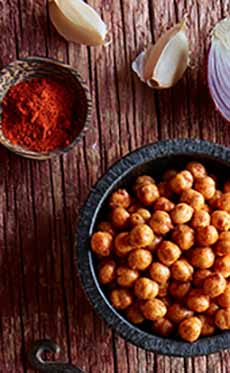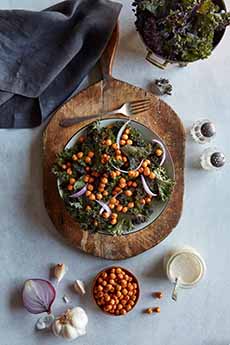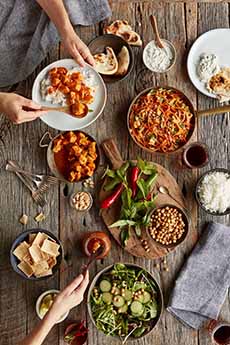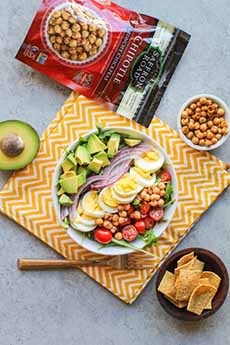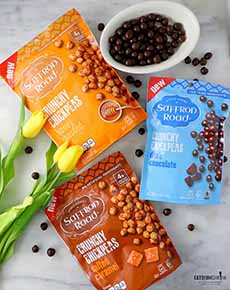TOP PICK OF THE WEEK: Saffron Road Crunchy Chickpea Snacks
|
|
From ancient times, across Asia, India and the Middle East, smart snackers have been enjoying the crunch of chickpeas. And because they’re a good source of protein and fiber, you can enjoy a crunchy snack that’s actually good for you. Roast chickpeas are more than a snack—although they do make a great snack with wine and beer. And Saffron Road Crunchy Chickpeas give you plenty of ways to use them: In fact, the crunchy snacks have so many fans that Saffron Road has expanded the original Sea Salt variety to 9 additional flavors: Chickpeas, or garbanzo beans, are a type of legume*. The most common type has a round shape and a beige color, but other varieties are black, green, or red. Their nutrients have a variety of health benefits. Chickpeas are high in calories, but they are all good calories. Like other legumes, such as lentils, chickpeas are rich in fiber and protein. They are an excellent source of protein and cholesterol-lowering fiber: 6g protein per serving, 5g dietary fiber. Chickpeas are an excellent source of folate (vitamin B9) and contain the antioxidant vitamins A and C, along along with other good-for-you phytonutrients. With zero cholesterol, saturated or trans fats and low in sodium, chickpeas are a heart-healthy food. Medically, their high level of insoluble fiber helps to prevent digestive disorders such as diverticulosis and IBS. Studies have shown better blood fat regulation—including lower levels of LDL-cholesterol, total cholesterol, and triglycerides. Call it Bengal gram, ceci bean, chana, garbanzo bean or sanagalu: The chickpea is one of the earliest cultivated legumes. Remains have been found in the Middle East that date back 7,500 years. “Chickpea” evolved from the Latin cicer, which happens to be the same root as the Roman name Cicero. The Oxford English Dictionary lists a 1548 citation that reads, “Cicer may be named in English Cich, or ciche pease, after the Frenche tonge.” By the mid-18th century, ciche peas became chick-peas. The word “garbanzo” is a bit more obscure. It is first noted in English in the 17th century, as “calavance,” perhaps from the Old Spanish algarroba. There is also a possible Basque word parent, garbantzu, a compound of garau, seed and antzu, dry. In ancient Greece, chickpeas (called erébinthos) were consumed raw when young and eaten as a staple food, as well as a dessert. The Romans roasted garbanzos as a snack and cooked them into a broth. Many centuries later, in 18th-century Europe, roasted chickpeas were ground and brewed as a coffee substitute. Today, halua, chickpeas in a sugar base that has some resemblance to peanut brittle, is a popular sweet dish in Bangladesh. Saffron Road debuted nationally in July 2010 in Whole Foods Market, as the world’s first halal-certified, antibiotic-free and humanely-raised frozen entrées. The first varieties were Indian dishes, and have expanded to a whopping 16 choices highlighting Indian and other cuisines. At last, one could whip up a dinner of Chicken Biryani or Lamb Saag just by going from freezer to microwave. We were instant fans. The product line has expanded to include, among other items: appetizers, bowls, simmer sauces and more crunchy snacks (baked lentil chips, chickpea crisps, lentil crackers). Check out the different types of beans and legumes in our Bean Glossary. |
|
|
__________________ *Legumes are plants that bear fruit that grows in pods. Legumes can be broken down into different subsections including: beans, lentils, peas and peanuts. |
||
